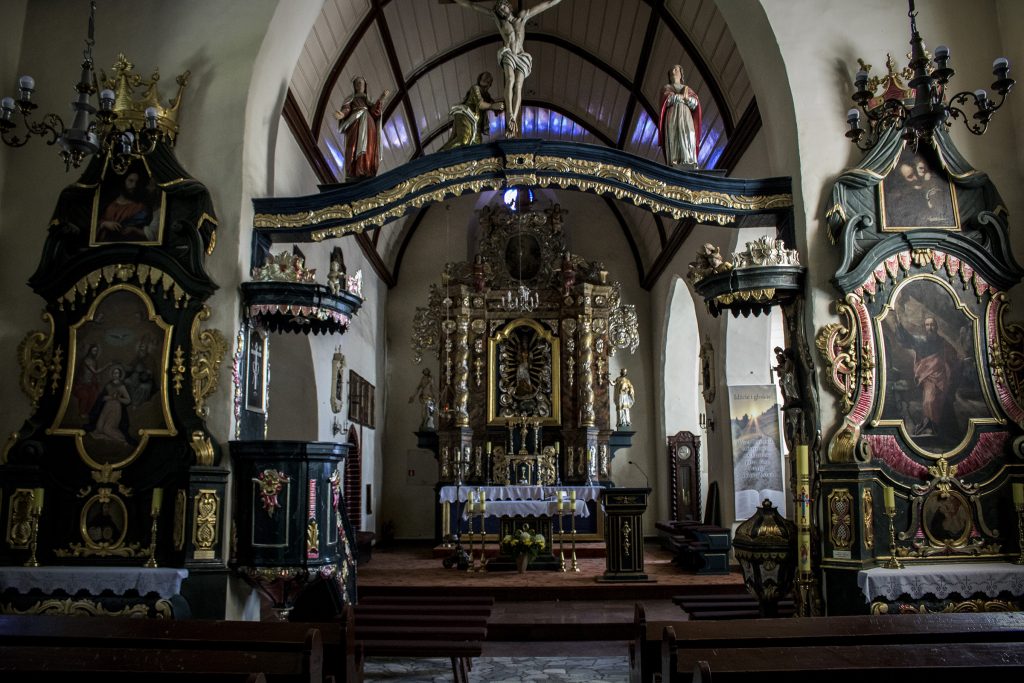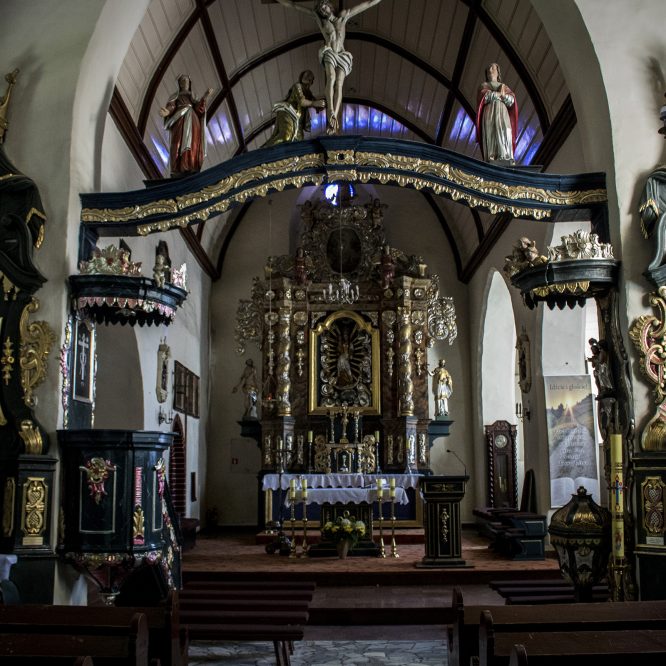Volume 3, Issue 35
Centuries ago, the Teutonic Knights established themselves within the Chełmno region of Poland. The country’s long and complex history is mired in conflict and subdivision, suffering its most catastrophic partition in the latter half of the 18th century. This once autonomous region was dominated by the Prussians and would remain so for over a century.
This beautiful church in Wabcz, constructed during the time of the Teutonic Knights, was a sacred place of worship for the Polish immigrants who arrived at Medina and Albion starting in the late 1870s. Oppressed culturally and religiously under German Chancellor Otto von Bismarck, the free practice of the Catholic faith and retention of Polish culture was under threat. The Kulturkampf or “Culture Struggle” sought to decrease the power of the Catholic Church, imprisoning priests, making marriage a civil ceremony, and pushing German settlement of Polish lands.
The city of Chełmno, approximately 15 minutes from Wabcz, served as a central location for conscripting young men into military service. The cadet academy at Chełmno produced qualified military officers while duplicate baptismal records were sent to Berlin for use in tracking young men who attained the appropriate age for military service. There is little doubt that the influx of Polish immigrants during this period was, in part, the result of this forced military service.
The Church of Sts. Bartholomew and Anne at Wabcz is a stunning sanctuary amidst the rolling Polish countryside. Reminiscent of Orleans County, waving fields of golden wheat sprawl throughout the region, cut into segments by single-lane gravel roads. One is hard-pressed to find a local resident who speaks any English and many intersections are adorned by shrines to the Virgin Mary.
I attended Sunday Mass at this church, although I will admit I had no understanding of what exactly was happening. The loveliness of this quaint church was exactly what one might imagine, especially for those who grew up attending St. Mary’s Assumption in Albion or Sacred Heart in Medina. The side altars, adorned with sacred artwork, pay homage to the Virgin Mary while statues embellish the spaces around the main altar. A stunning depiction of the crucifixion sits above the sanctuary.
The Poles are devout in their visitation of the nearby cemetery after Mass. The building empties almost immediately after, where the faithful flock to their vehicles and drive up the road to attend to their flowers. Although the cemeteries no longer contain the names of our immigrant ancestors, the registers of the church contain those surnames that so commonly appear throughout Orleans County; Cichocki, Czachorowski, Danielewski (Daniels), Depczynski, Gurzinski, Kaniecki, Kwiatkowski, Norkowski (Noreck), Reis (Rice), and Sadowski, just to name a few.
Although most local Polish immigrants left their homes in the latter quarter of the 19th century, one would suspect that some family members remained behind. When the Nazis came through the region in 1939, Chełmno became a site for the imprisonment of the Polish intelligentsia in the Pomerania region. The nearby hamlet of Klamry, 14 kilometers from Wabcz, served as a site for the mass execution of approximately 2,000-2,500 inhabitants of the Chełmno region, mostly teachers, priests, political activists, and retired military members.



